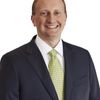"I wish the press would report the crowd like it is." - Donald Trump, at a campaign rally in Jacksonville, Florida.
"I want to say hello to the overflow crowd who couldn't get in." - Hillary Clinton, at a campaign rally in Commerce City, Colorado.
As with seemingly everything in the 2016 election cycle, the general election battle over who has larger rally crowds begins. As the candidates held dueling rallies the other day, almost 15,000 followers were reported at a Trump rally in Jacksonville, Florida, compared to about 3,500 followers in a Clinton rally in Commerce City, Colorado. Amidst accusations of crooked fire marshals, the media falsifying crowd size estimates, and the desire by both campaigns to publicly portray fervent support, a cautionary note to candidates and consumers of data alike--beware of what I call the "fallacy of the rally crowds."
One only needs to look to the Democratic primary for a recent example:
Stories of enthusiastic Bernie Sanders crowds, some as large as 28,000 in New York state, were a familiar news story leading up to the primary. Pundits proclaimed that the enthusiastic crowds were a pre-cursor to a potentially shocking upset victory in NY that would betray the polls. Hillary Clinton won by a little over 300,000 votes, taking 58% of the vote. As described in this article from Vice News:
"[Sanders'] defeat in New York was bleak. Despite record-setting rally turnouts of 28,000 and a grassroots effort manned by some of his most vocal and vehement supporters both on and offline in the Empire State, Sanders' momentum after eight straight primary victories failed to translate to the polls in New York on Tuesday."
So, what can be learned about rally crowd size, and why is reliance on it as a measure of campaign success fraught with statistical peril?
•First, remember candidates get to choose where they hold rallies. No one wants a rally in an empty room or in front of the opponent's fervent supporters. Jacksonville, Florida is in Duval County--and in 2012, Republican Mitt Romney carried that county with 211,000 votes and 51.7% of the total. Commerce City is in Adams County, Colorado--and, no surprise, Barack Obama carried that county with 56.2% of the vote. A fervent crowd in front of a Republican-leaning or Democratic-leading county may not mean much about the broader electorate.
•Second, by what metric do we measure what is defined as a "large" or "excited" crowd? There is no objective standard for crowd electricity, at least that I know of. Decibels of cheering, perhaps? Let's put in perspective the relative size of the crowds compared to the voting electorate. In the 2012 race, more than 400,000 people voted in Duval, so a crowd of 15,000 is approximately 3-4%. Not an insignificant number, but looking at it this way does put in perspective. And, that assumes all 15,000 come only from Duval. Take Adams County-where Hillary Clinton spoke yesterday. Even assuming the crowd is 3,500, about 160,000 people voted in 2012 -- which means the turnout was less than 2% of the voting electorate.
•Finally, remember, the plural of anecdote is not data. Polling is based on trying to get a representative sample of the electorate. Even when pollsters are trying to get a representative sample, it is often hard to get it right. Rally crowds are the opposite of a representative sample--they are by nature a very selected group--fervent supporters, often times taking time away from work or family to hear a campaign speech in the middle of the day. Most are not undecided voters.
Large crowds may create campaign excitement, energy, and could even bode well for a campaign. But, candidates (and voters) should be wary of interpreting large, energetic crowds as anything more than what they are--an anecdote.
John H. Johnson, PhD is the CEO of Edgeworth Economics and the author of "EVERYDATA: The Misinformation Hidden in the Little Data You Consume Every Day."
